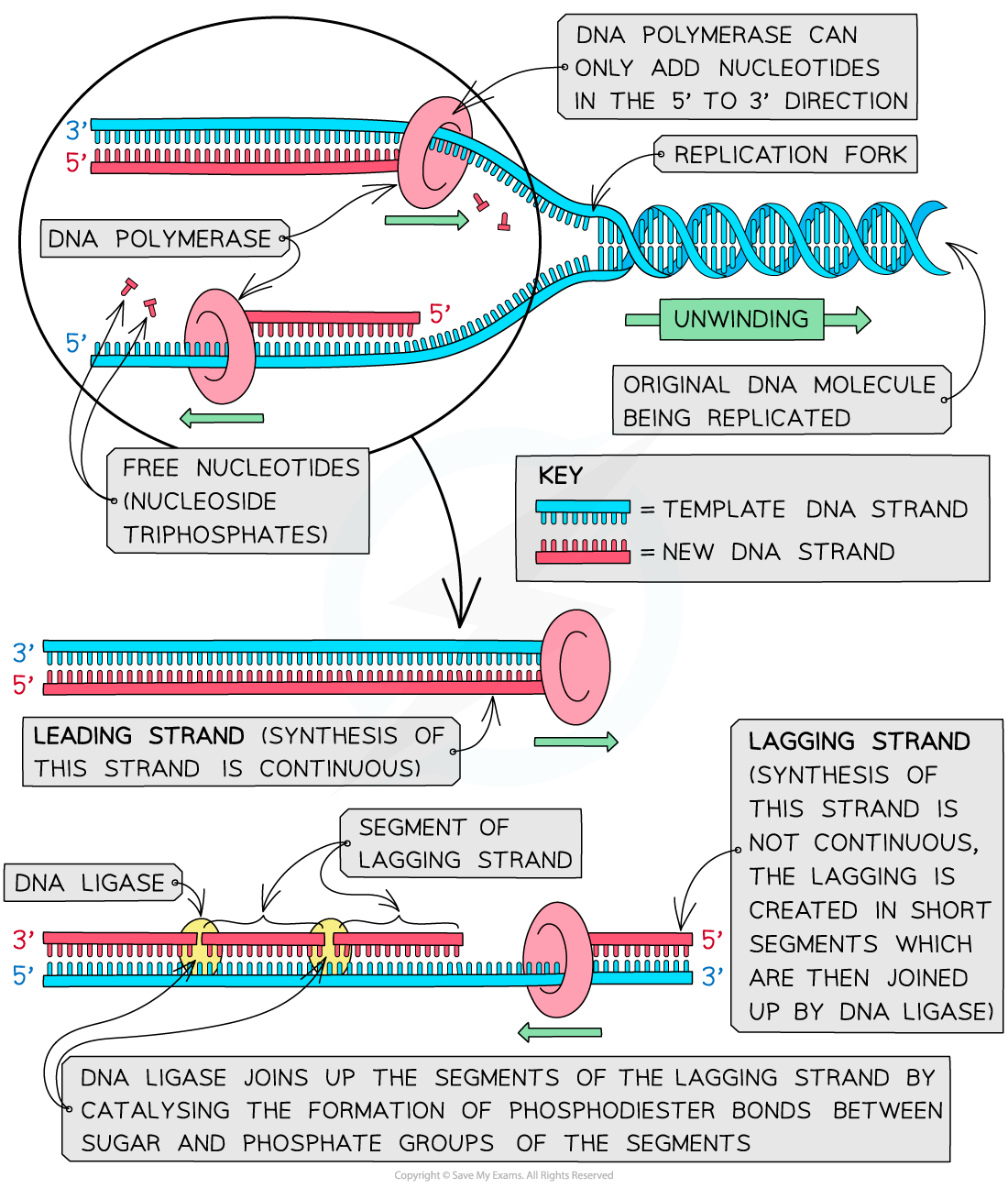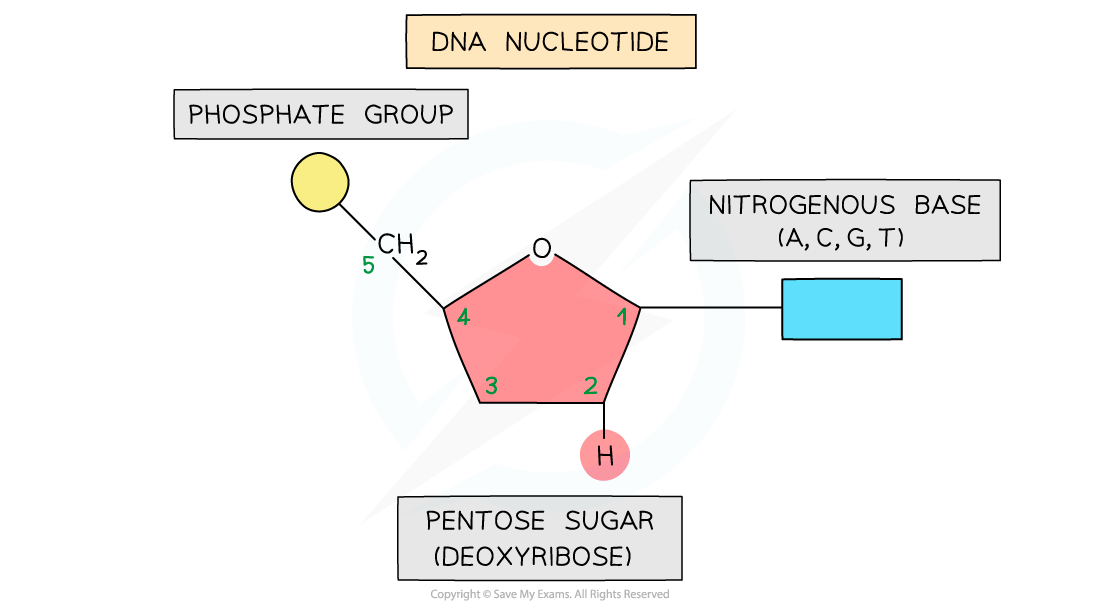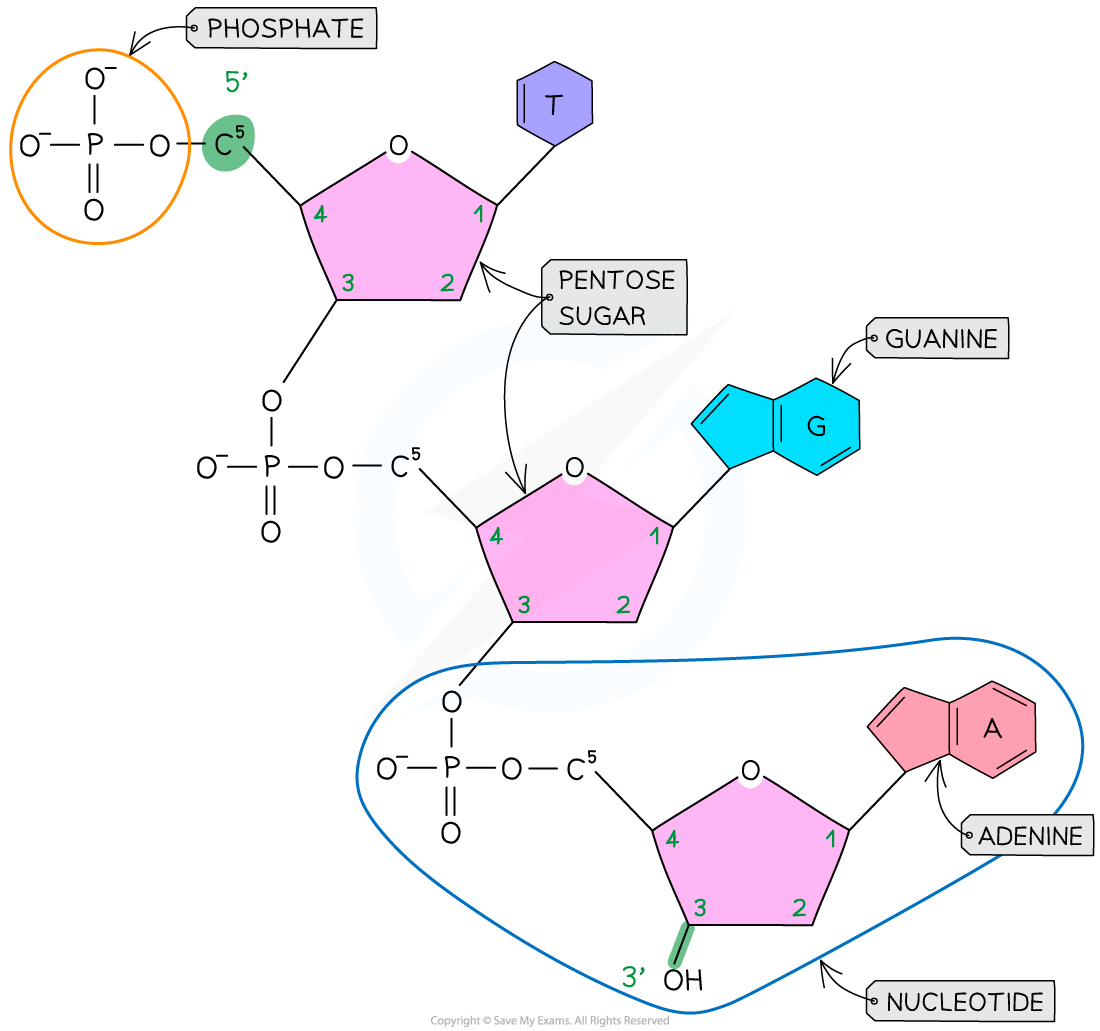Leading Strand & Lagging Strand
- Double-stranded DNA consists of two antiparallel strands (oriented in opposite directions)
- During DNA replication, the two strands are ‘unzipped’ and DNA polymerase moves along each template strand linking nucleotides together to form a new strand
- Crucially, DNA polymerase can only add new nucleotides in a 5’ to 3’ direction
- As the template strands are antiparallel, replication needs to proceed in opposite directions
- As the replication fork opens up in one direction only, each new strand is synthesised differently
- The leading strand is made continuously, following the fork as it opens
- The lagging strand is made discontinuously, in short fragments, away from the fork
- As more template strand is exposed, new fragments (called Okazaki fragments) are created
- Okazaki fragments are later joined together by DNA ligase to form a continuous complementary DNA strand

During DNA replication, synthesis of the leading strand is continuous but synthesis of the the lagging strand is discontinuous in small fragments (not all the enzymes involved are shown)
Enzymes Involved in DNA Replication
- DNA replication is carried out by a complex system of enzymes working as a team
- Helicase unwinds the DNA double helix at the replication fork by flattening out its helical structure
- Analogy - think about untwisting a rope ladder
- Helicase then causes the hydrogen bonds between the two strands to break
- Analogy - unzipping a zipper
- DNA gyrase releases the strain within the supercoiled areas to allow helicase access to the helix
- Single-stranded binding proteins keep the separated strands apart whilst the template strand is copied
- DNA primase generates a short RNA primer on the template strands
- Providing an initiation point for DNA polymerase III to add new nucleotides
- A number of polymerases are involved in DNA replication, each with different functions
-
- Two of these polymerases are
- DNA polymerase III, which starts replication next to the RNA primer linking nucleotides in a 5’ to 3’ direction to form a new strand
- DNA polymerase I, which removes the RNA primers on the leading and lagging strands and replaces it with DNA
- Two of these polymerases are
- DNA ligase joins up the Okazaki fragments by catalysing the formation of sugar-phosphate bonds
Direction of Replication
- Similar to transcription and translation, DNA replication must occur in the 5’ to 3’ direction
- DNA polymerase only works in a 5’ to 3’ direction, adding nucleotides to the 3’ end
- DNA polymerases can only add nucleotides to the 3’ end of a primer
- DNA nucleotides have a phosphate bonded to the 5’ carbon of the deoxyribose sugar
- When DNA polymerase adds a new nucleotide to extend the DNA strand, the 5’ phosphate group of the incoming DNA nucleotide bonds to the free 3’ -OH group on the growing strand

DNA nucleotides have a phosphate bonded to the 5’ carbon of the pentose sugar

When DNA polymerase adds a new nucleotide, the 5’ phosphate group of the incoming nucleotide bonds to the free 3’ -OH group on the growing strand
